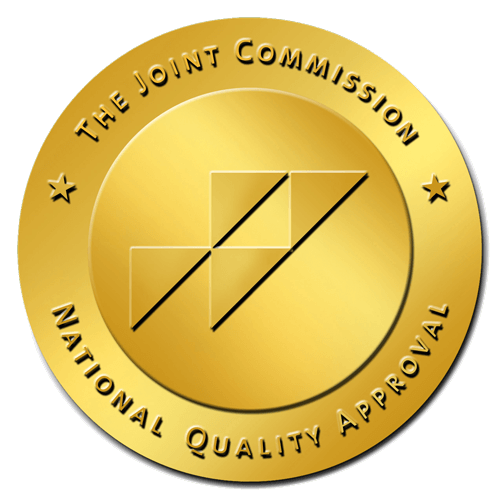Understanding Checking and Counting Behaviors in OCD: How Exposure and Response Prevention Can Help
Obsessive-Compulsive Disorder (OCD) is a mental health condition that involves persistent, intrusive thoughts (obsessions) and repetitive behaviors (compulsions) that individuals feel driven to perform to reduce anxiety or prevent a feared event. Among the most common compulsions in OCD are checking and counting behaviors. These actions may seem like minor habits to those unfamiliar with the disorder, but for individuals with OCD, they can significantly impact daily life and well-being. In this blog post, we’ll explore checking and counting behaviors in OCD, their underlying causes, and how Exposure and Response Prevention (ERP) therapy can help individuals manage and overcome these compulsions.
What Are Checking and Counting Behaviors in OCD?
Checking behaviors in OCD often arise from a deep-rooted fear that failing to complete a task correctly or neglecting a responsibility could lead to catastrophic consequences. These behaviors might include checking whether doors are locked, appliances are turned off, or personal belongings are in place. For some individuals, the urge to check may extend to more abstract concerns, like ensuring a form is filled out correctly or double-checking that they haven’t harmed someone.
These actions are typically driven by an overwhelming sense of responsibility and a constant doubt about whether the task has been completed properly. This doubt can escalate to anxiety, leading to the compulsion to check repeatedly—despite knowing logically that the task has already been completed. The fear of something bad happening—like a fire, losing a wallet, or unintentionally harming someone—can feel unbearable, making the compulsive checking seem like the only way to prevent disaster.
Counting behaviors, on the other hand, often stem from a belief that specific numbers or rituals can ward off bad outcomes or ensure that something is “done right.” Individuals with OCD might feel the need to count certain objects, steps, or repetitions until they reach a number that feels “safe” or “perfect.” In some cases, counting is linked to checking behaviors, where individuals count to verify that a task has been completed correctly. In other cases, it may be rooted in magical thinking—the belief that certain numbers or rituals have the power to prevent harm or bring good luck.
Both checking and counting behaviors, while offering temporary relief from anxiety, can ultimately reinforce feelings of uncertainty and self-doubt. As individuals with OCD continue to engage in these behaviors, they become trapped in a cycle of compulsions that only increase their fear and anxiety over time.
How Exposure and Response Prevention (ERP) Helps
Exposure and Response Prevention (ERP) is a type of Cognitive Behavioral Therapy (CBT) that is widely considered the gold standard for treating OCD. ERP involves exposing individuals to situations or thoughts that trigger their obsessions, while simultaneously preventing the compulsive response (such as checking or counting). The goal is to help individuals tolerate the anxiety and uncertainty that arise without relying on their compulsions for relief.
In the case of checking behaviors, ERP encourages individuals to face situations that trigger their urge to check—such as leaving the house without double-checking the door or unplugging appliances—and resist the urge to perform the compulsion. While this may initially lead to high levels of anxiety, over time, it helps individuals learn that they can tolerate the distress instead of trying to constantly get rid of it. Over time, their distress levels lower, and the urge to check gradually diminishes.
For counting behaviors, ERP works by encouraging individuals to resist the urge to count, despite the anxiety and discomfort it may cause. By resisting counting, individuals are able to challenge the magical thinking that links certain numbers or rituals to safety or protection. Just like with checking, the goal of ERP is to allow individuals to experience the anxiety without performing the compulsion, which over time reduces the frequency and intensity of the behavior.
Why Checking and Counting Behaviors Are So Challenging
Checking and counting compulsions in OCD can be difficult to overcome because they are often tied to deeply ingrained fears about responsibility, harm, and control. These behaviors are driven by the belief that if they do not perform the compulsion, something catastrophic will happen. The anxiety that accompanies the obsession can feel overwhelming, and the compulsion (checking or counting) may provide temporary relief. However, this relief is short-lived, and the cycle of compulsive behavior continues, reinforcing the obsession and anxiety.
Additionally, checking and counting behaviors often become a way for individuals to cope with the uncertainty and lack of control that can characterize OCD. The behaviors offer a false sense of security, leading individuals to believe that their anxiety and fear can be controlled through ritualistic actions. Unfortunately, this only perpetuates the cycle of compulsions and anxiety, making it harder for individuals to break free from the grip of OCD.
The Benefits of ERP for OCD
Exposure and Response Prevention (ERP) helps individuals confront their obsessions and compulsions in a safe, structured way. By gradually exposing individuals to the feared situations and preventing the compulsive response, ERP teaches individuals that they can tolerate anxiety without resorting to compulsions. Over time, this leads to a reduction in the frequency and intensity of checking and counting behaviors, as well as a greater sense of confidence.
By facing anxiety-provoking situations and learning to resist compulsions, individuals with OCD can break free from the cycle of checking and counting, rebuild trust in their memory and judgment, and ultimately lead a more fulfilling life. If you or a loved one is struggling with OCD, the OCD Institute of Texas is here to help with compassionate, evidence-based treatment.


